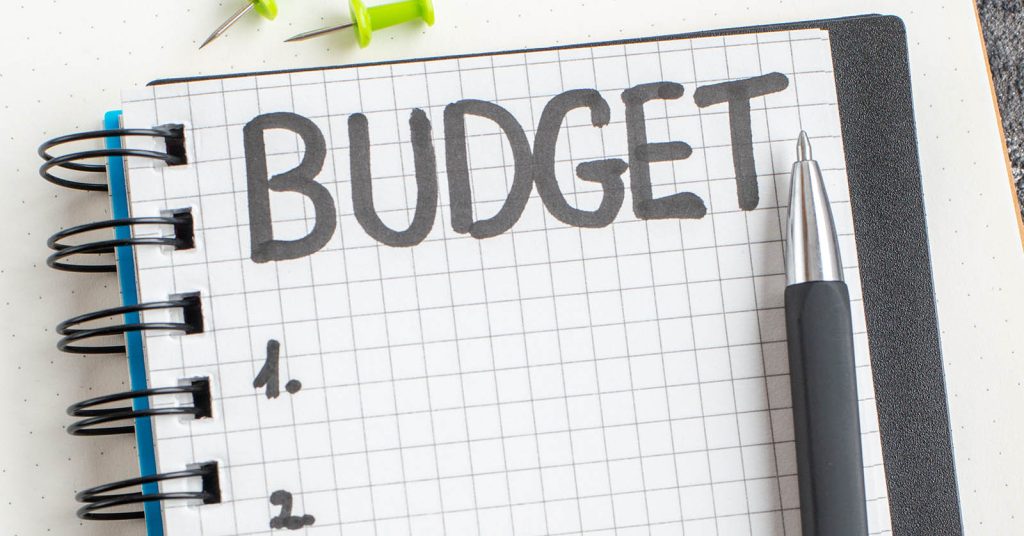Joining finances is one of the biggest decisions couples make. It affects how you pay bills, save, invest, and handle surprises — good and bad. The two most common approaches are “one pot” (fully pooled money) and “yours–mine–ours” (hybrid). Each can work brilliantly or backfire, depending on your income mix, debt, money habits, and trust systems.
Key Takeaways
- Choose the model that fits your risk, not your vibe — the right structure reduces conflict and protects both partners.
- Define what “shared” means — write down which expenses are joint, how contributions are calculated, and who decides what.
- Automate a 1–2–3 flow — income → bills/savings first → discretionary money; review monthly and after big life changes.
- Add guardrails — joint + separate accounts, spend limits, transparency, and backup access to avoid avoidable emergencies.
How the two models work
One pot (fully pooled) means all income lands in shared accounts, and you pay everything from there. You may still keep small personal “fun money” accounts, but conceptually, household money is shared. This can feel simple and team-oriented and often makes long-term planning easier. The trade-off is you’ll need stronger agreement on day-to-day spending norms and clear protections for both partners.
Best for: comparable incomes, similar spending styles, long-standing trust, and big shared goals on the same timeline (e.g., buying a home soon). It also works well when one partner pauses paid work (school, caregiving), because “household income” remains joint.
Watch-outs: resentment if one partner feels micromanaged; risk if one person dominates decisions; and practical exposure if one person could drain funds without notice. Joint accounts give all owners full access — either person can withdraw the entire balance. Build guardrails (limits, alerts, and transparency) up front (CFPB guidance on joint accounts highlights these risks and setup considerations).
Yours–Mine–Ours (hybrid) uses three lanes: your account(s), your partner’s account(s), and a shared “ours” account for common bills and goals. Each person contributes to the shared account by percentage of income (e.g., 60/40) or by equal fixed amounts, then keeps the rest for personal spending or individual goals.
Best for: uneven incomes, different spending styles, existing personal debts, or couples who want autonomy while still running a smooth household and saving for common priorities.
Watch-outs: friction if “what counts as shared” isn’t written down; underfunding the shared pot; and “fairness drift” when incomes change but contribution rules don’t. A quarterly check-in keeps the split aligned with reality.
Bottom line: both work. Choose based on your decision style (consensus vs. independent), income pattern (steady vs. variable), and risk comfort (pooled exposure vs. compartmentalized autonomy). Many couples start hybrid and later move toward one pot as trust, systems, and life complexity evolve (FINRA’s consumer education notes that couples should explicitly decide how to combine finances and revisit decisions as circumstances change).
Define “shared” and your contribution rules
Most money fights aren’t about math; they’re about “what did we agree to?” Write a one-page Household Money Charter and store it in your shared drive:
- Scope of shared costs: housing (rent/mortgage, taxes, insurance), utilities, internet/mobile, groceries/household, transportation (fuel, transit, insurance + joint car payments), kids/pets, health insurance premiums & shared out-of-pocket, streaming only if shared, subscriptions used by both, and minimum debt payments on any joint debt.
- What remains personal: individual hobbies, personal shopping, gifts to own family/friends, solo trips, discretionary upgrades (e.g., pricier phone plan for one person), and pre-existing individual debt unless you jointly decide to accelerate it together.
- Contribution method: percentage of gross income, percentage of take-home (net), or fixed dollar amounts. Percent-of-net is simplest when your taxes/benefits differ. Recalculate after raises or major changes.
- Decision thresholds: any purchase over $X requires a check-in; emergency fund withdrawals require both partners.
- Transparency: both partners can see the shared account ledger and savings dashboards; personal accounts are private but track summary totals for planning.
Build the account map and automate your 1–2–3 cash flow
Whether you choose one pot or hybrid, use a simple routing that pays you first, bills second, and lifestyle last. Set these up once in online banking:
- Income in: direct deposit(s) → primary hub (One Pot: the joint checking; Hybrid: each person’s checking).
- Pay yourself first: automatic transfers on payday to Emergency Fund, Retirement (401(k)/IRA/HSA), and top goals (down payment, daycare fund, new car). Automate at least the minimum to stay on track.
- Shared bills & sinking funds: auto-transfer to “Ours” for this month’s bills and sinking funds (annual insurance, car maintenance, holidays, travel). Put due dates on a shared calendar; enable transaction alerts for both partners.
Emergency fund target: aim for 3–6 months of essential expenses; if your income is variable or your home/car systems are older, lean 6–9 months. Re-check annually as bills and risks change (general consumer budgeting guidance supports building an emergency cushion and reviewing regularly).
Joint account safety note: all owners have full access and can withdraw funds; use alerts and limits. For deposits, FDIC insurance covers $250,000 per co-owner at an insured bank for joint accounts — structure large balances accordingly and confirm titling at each bank.
Credit, debt, and protections most couples overlook
Credit identities stay separate. Marriage or living together doesn’t merge credit files. Joint loans and joint cards do report to both, and missed payments harm both. Agree who pays what and set up autopay on every shared account.
Authorized users: adding a partner as an authorized user can help them benefit from your positive history and on-time payments, but the primary account holder remains responsible for the balance. Use this carefully and pair it with spending alerts.
Debt strategy: if one partner has high-interest personal debt, you can keep it “personal” but still plan jointly to accelerate payoff (e.g., the higher-earning partner covers a larger share of shared expenses temporarily so the other can snowball/avalanche).
Account access for emergencies: maintain a sealed “break-glass” file: bank names, last-4 digits, beneficiaries/POD designations, and how to access critical bills. Make sure both partners can log in to the utility and insurance portals in a pinch.
Legal & beneficiary basics: name beneficiaries on retirement accounts; set up transfer-on-death (TOD/POD) where appropriate; refresh wills and powers of attorney after marriage, move, or the birth of a child.
Step-by-step setup: One Pot vs. Yours–Mine–Ours
For One Pot
- Open a joint checking (bills) and joint savings (emergency + goals). Keep a small personal “fun” checking each if you prefer autonomy.
- Direct deposit all income into joint checking. Automate transfers to savings/goals on payday.
- Autopay core bills from joint checking; use a shared credit card for household variable categories (groceries, gas) and pay in full monthly.
- Set a per-purchase approval threshold (e.g., $200+). Review the statement together monthly.
- Quarterly: revisit savings rates, insurance, and big-ticket plans.
For Yours–Mine–Ours
- Keep (or open) two personal checking accounts and one shared “Ours” checking + one shared savings.
- Direct deposit into personal accounts. Automate contributions to “Ours” (percent-of-net or fixed amount) on the same day each pay cycle.
- Autopay all shared bills from “Ours”; personal spending comes from personal accounts.
- Track shared variable categories with a shared card tied to “Ours” and pay it in full from “Ours.”
- Monthly: reconcile contributions vs. actuals; quarterly: true-up the split if incomes changed by ~10%+.
| Method | Best For | Pros | Watch-Outs |
|---|---|---|---|
| One Pot | Similar incomes, unified goals, high trust | Simpler planning; unified savings; fewer transfers | Less autonomy; exposure if trust breaks; requires clear guardrails |
| Yours–Mine–Ours | Uneven incomes, different spending styles, legacy debts | Autonomy + teamwork; cleaner accountability; easier “fairness” | Requires clear shared-expense rules; can underfund “Ours” without discipline |
Money meetings that actually work
Short, consistent check-ins beat long, sporadic summits. Use a recurring agenda so it never feels personal — just procedural:
- 10 min: scoreboard — balances of “Ours,” emergency fund progress, debts, and the next three big bills.
- 15 min: look-back — anything surprising last month? Any subscriptions or categories to adjust?
- 20 min: look-ahead — travel, medical, car maintenance, renewals; pre-fund them via sinking funds.
- 10 min: tune-ups — adjust contribution split, raise savings rate, or lower discretionary caps if needed.
- 5 min: gratitude — one thing each appreciates about how the other handled money. It matters.
Guardrails: privacy, safety, and financial fairness
Privacy vs. transparency: hybrid couples often choose full transparency on “Ours,” plus summary visibility on personal accounts (e.g., “Sam saves $400/month personally” without sharing every line item). Decide what reduces anxiety while preserving autonomy.
Spending limits & alerts: enable bank alerts for purchases over $X, low-balance warnings, and upcoming bill notices. Joint owners should both receive alerts on the shared accounts.
Emergency access: even with separate accounts, both partners should be able to pay the rent if one is unreachable. Keep a funded “Ours” buffer (one month of shared bills) at all times.
Depositor protection: for large cash balances, confirm FDIC insurance coverage and account titling. Joint accounts at insured banks are typically covered up to $250,000 per co-owner; use multiple banks or ownership categories for higher coverage when needed.
When to pause pooling: significant addiction, financial control, or unstable behavior warrants a safety-first structure (hybrid with tight limits or separate finances), with professional support. Know that joint accounts allow either owner to withdraw funds at any time.
30-day rollout plan you can start this weekend
Day 1–2: pick your model; write the Money Charter (shared vs. personal, contribution rule, spending threshold). Open any needed accounts; order a shared card.
Day 3–7: list every shared bill, average variable categories, and near-term irregulars (renewals, travel). Create sinking funds and set target amounts.
Day 8–14: set up direct deposits and automatic transfers (pay-yourself-first → “Ours” → personal). Turn on alerts for both partners.
Day 15–21: run a dry-run week using the shared card for household categories. Adjust category caps if you’re consistently short or long.
Day 22–30: first money meeting; tune the contribution split; commit to a recurring monthly meeting on the same day/time. Revisit after any major change (raise, new job, baby, move).
Frequently Asked Questions (FAQs)
Is one model “better” for building wealth?
Neither model guarantees better results — the win comes from automation + clarity. One pot can speed joint goals because all dollars are pooled, while hybrid can reduce friction and keep momentum because small differences don’t derail the plan. Pick the model that your household can run consistently.
How should we split contributions if our incomes change a lot?
Use a percent-of-net rule (after taxes/benefits) and do a monthly true-up for variable pay. If one partner gets a big raise or switches jobs, schedule a split review. If income volatility is extreme, maintain a one-month buffer in “Ours.”
Should we open a joint credit card?
Joint or co-signed accounts affect both credit files; missed payments hurt both. Many couples instead use a shared card in one person’s name and add the partner as an authorized user for household spending, then pay in full from the shared account. The primary cardholder remains responsible for the balance; set alerts and spending caps.
How much should we keep in the shared account?
Keep at least one month of shared bills as a rolling buffer. Fund irregulars (insurance, car maintenance, holidays) via sinking funds in shared savings, topped up monthly. Build and maintain a 3–6 month emergency fund (6–9 months if income is variable).
Sources
- Consumer Financial Protection Bureau (CFPB) — budgeting tools, joint accounts considerations, and guidance for couples (see “Your Money, Your Goals” toolkit and joint-account cautions; updated pages include 2025 content).
- FINRA — How to Combine Finances: pros and cons, conversations to have, and coordination tips for couples.
- FDIC — Deposit Insurance for Joint Accounts: coverage rules (generally $250,000 per co-owner at an insured bank), titling requirements, and examples.
- Consumer.gov — Making a Budget: official step-by-step basics useful for setting up household plans and monthly reviews.









